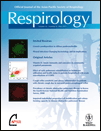Preventing hospitalizations for COPD exacerbation: Early pulmonary rehabilitation?
China has one of the largest COPD populations in the world, with a prevalence of 8.2% (men, 12.4%; women, 5.1%).1 COPD is recognized as a major public health problem in China and worldwide. The disease is known for its progressive course with ‘flare ups’ known as COPD exacerbations which necessitate a change in regular medication,2 while the more severe exacerbations often require hospital admission.3 Failing to recognize and neglecting to treat the underlying chronic disease has led to escalating numbers of hospital admissions and early death. Exacerbations of COPD are estimated to result in more than 500 000 hospitalizations per year in the USA.4 The major economic component of health-care cost in COPD is the number of hospitalizations, which represents 40–58% of the total direct cost, reaching up to 63% of the cost in severe patients.5 In Canada and similarly in other countries where statistics have been collected, more patients are being admitted to hospital because of COPD than heart attacks and that figure has been increasing dramatically over the years.6
COPD must be diagnosed and managed optimally in order to reduce hospitalizations, improve patient quality of life, and provide more complete health care while using health resources more efficiently and effectively. With the recognition of the importance of COPD exacerbations comes the knowledge that prevention of exacerbations is an important goal of COPD therapy. Despite limitations for the development of strong evidence-based guidelines, recommendation of seasonal flu vaccination and pneumococcal vaccination (at least once) for patients with COPD is justified considering the low risk benefit ratio, that is, a relative low risk for adverse events and a potential for effectiveness. The pharmacological management of COPD has changed over the years. For a long time, pharmacological treatments have largely targeted patients' symptoms and disability. In the recent years, large intervention trials have shown the benefits of pharmacotherapy in reducing the rate of acute exacerbations and hospital admissions.7–11
Non-pharmacological treatments are becoming an important part of managing COPD. Pulmonary rehabilitation is among the best treatment to improve symptoms, exercise capacity and health status in patients with COPD.12,13 There is a possibility that pulmonary rehabilitation reduces the number of hospital days and other health-care utilization.14 In this issue of Respirology, Ko et al. assessed whether an early outpatient pulmonary rehabilitation programme following hospitalization for COPD exacerbation, compared with usual care, reduced health care utilization over the succeeding year.15 This is a well-conducted randomized clinical trial. The study showed improvement in health-related quality of life but failed to show a reduction in the rate of hospital admissions and emergency department visits. The large confidence interval reported in the study is in keeping with a relatively imprecise estimate of the admission risk ratio. Insufficient statistical power could explain the inability to detect an effect on hospital admissions. Another explanation for a lack of intervention effect on hospital admissions could be that the intervention was primarily limited to exercise training. Patients did not receive education aiming at self-management, an action plan for rapid access to treatment, and regular follow up from a case-manager. This approach has clearly shown to be beneficial16–19 by resulting in a reduction of emergency department visits and hospital admissions. The results of these studies suggest that self-management should be an important component of COPD management and should be part of a pulmonary rehabilitation programme20.
There may be a lesson to learn from this study and other pulmonary rehabilitation trials. The focus of pulmonary rehabilitation trial should not be only on exercise training, unless the outcome of interest is to improve exercise capacity. COPD patients and those being hospitalized have concerns other than having physical disability. Patients discharged from hospital following an exacerbation condition will often need much more than only physiological or exercise capacity improvement. Patients will often have feelings of anxiety and fear, uncertainty as to when to call for help or which action to take in the event of an exacerbation, feelings of isolation, and a need for support and home care from family and social services. To be effective, our intervention will likely need to address these other aspects of the disease. These are important to help patients to cope better with COPD on a day-to-day basis, and consequently in their decision leading to hospital admission. Our future research will need to focus on trying to understand the role and effects of various components of non-pharmacological therapy as part of an integrated care approach. This will likely require a coordinated effort and commitment from patients, physicians, the health-care system and the community, to manage it optimally.




